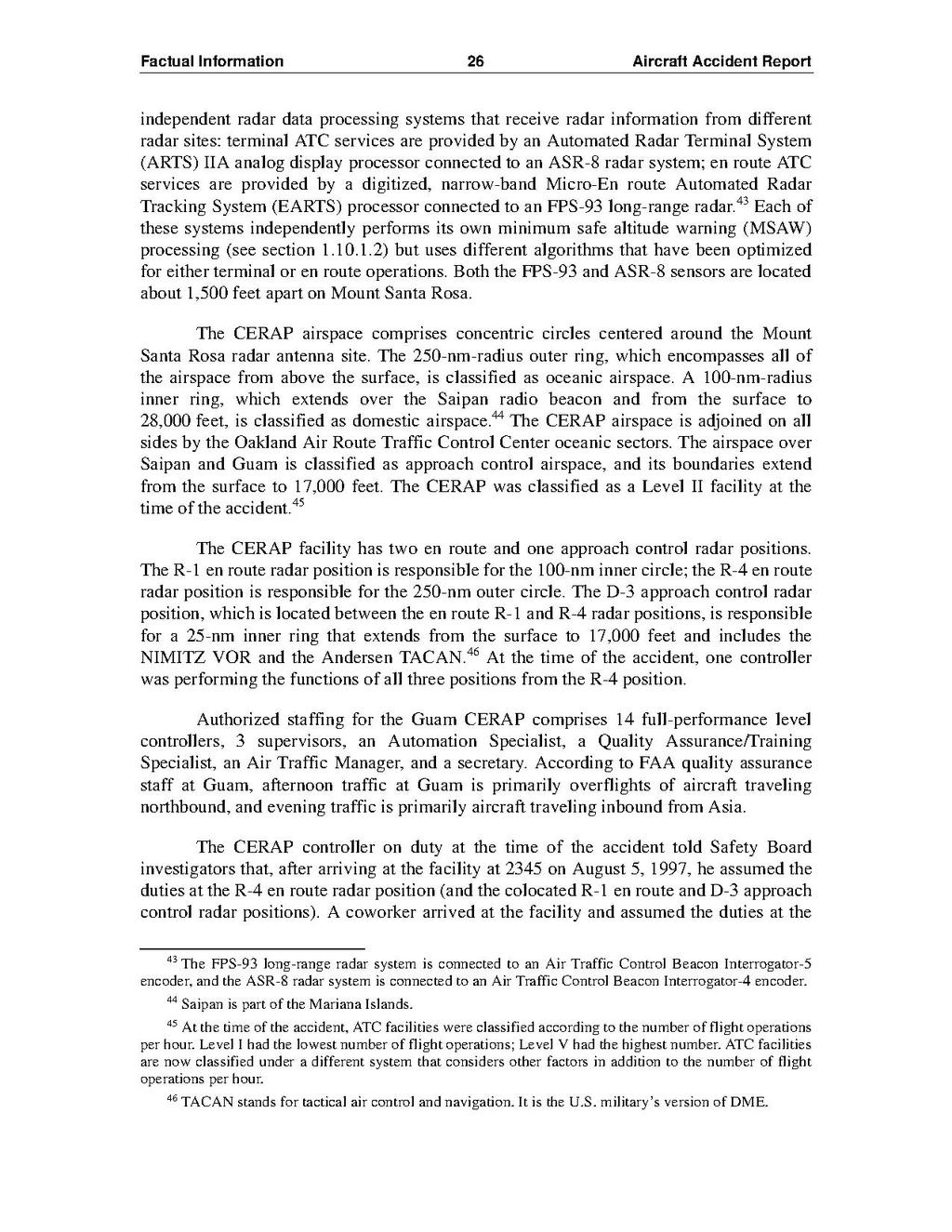independent radar data processing systems that receive radar information from different radar sites: terminal ATC services are provided by an Automated Radar Terminal System (ARTS) IIA analog display processor connected to an ASR-8 radar system; en route ATC services are provided by a digitized, narrow-band Micro-En route Automated Radar Tracking System (EARTS) processor connected to an FPS-93 long-range radar.[1] Each of these systems independently performs its own minimum safe altitude warning (MSAW) processing (see section 1.10.1.2) but uses different algorithms that have been optimized for either terminal or en route operations. Both the FPS-93 and ASR-8 sensors are located about 1,500 feet apart on Mount Santa Rosa.
The CERAP airspace comprises concentric circles centered around the Mount Santa Rosa radar antenna site. The 250-nm-radius outer ring, which encompasses all of the airspace from above the surface, is classified as oceanic airspace. A 100-nm-radius inner ring, which extends over the Saipan radio beacon and from the surface to 28,000 feet, is classified as domestic airspace.[2] The CERAP airspace is adjoined on all sides by the Oakland Air Route Traffic Control Center oceanic sectors. The airspace over Saipan and Guam is classified as approach control airspace, and its boundaries extend from the surface to 17,000 feet. The CERAP was classified as a Level II facility at the time of the accident.[3]
The CERAP facility has two en route and one approach control radar positions. The R-1 en route radar position is responsible for the 100-nm inner circle; the R-4 en route radar position is responsible for the 250-nm outer circle. The D-3 approach control radar position, which is located between the en route R-1 and R-4 radar positions, is responsible for a 25-nm inner ring that extends from the surface to 17,000 feet and includes the NIMITZ VOR and the Andersen TACAN.[4] At the time of the accident, one controller was performing the functions of all three positions from the R-4 position.
Authorized staffing for the Guam CERAP comprises 14 full-performance level controllers, 3 supervisors, an Automation Specialist, a Quality Assurance/Training Specialist, an Air Traffic Manager, and a secretary. According to FAA quality assurance staff at Guam, afternoon traffic at Guam is primarily overflights of aircraft traveling northbound, and evening traffic is primarily aircraft traveling inbound from Asia.
The CERAP controller on duty at the time of the accident told Safety Board investigators that, after arriving at the facility at 2345 on August 5, 1997, he assumed the duties at the R-4 en route radar position (and the colocated R-1 en route and D-3 approach control radar positions). A coworker arrived at the facility and assumed the duties at the
- ↑ The FPS-93 long-range radar system is connected to an Air Traffic Control Beacon Interrogator-5 encoder, and the ASR-8 radar system is connected to an Air Traffic Control Beacon Interrogator-4 encoder.
- ↑ Saipan is part of the Mariana Islands.
- ↑ At the time of the accident, ATC facilities were classified according to the number of flight operations per hour. Level I had the lowest number of flight operations; Level V had the highest number. ATC facilities are now classified under a different system that considers other factors in addition to the number of flight operations per hour.
- ↑ TACAN stands for tactical air control and navigation. It is the U.S. military's version of DME.
